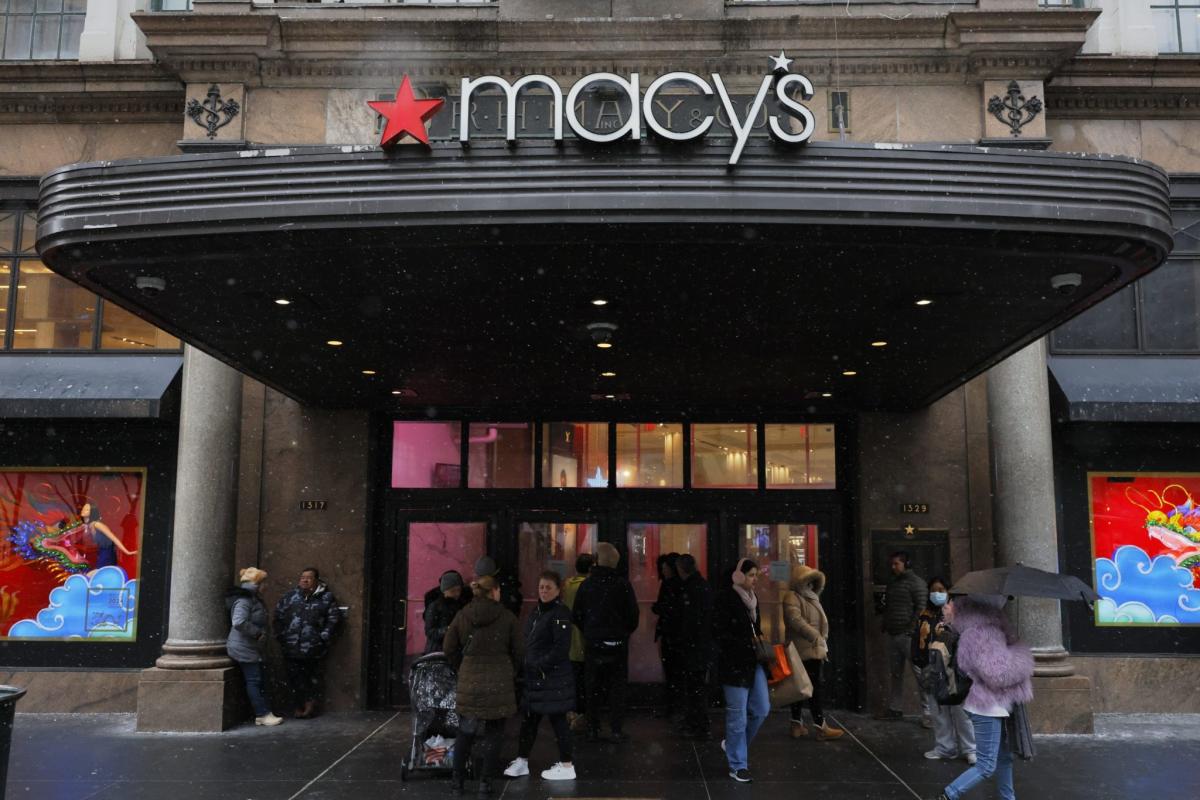
Good morning. Macy’s is in crisis mode after disclosing that an employee cooked the books for years, using unethical accounting practices to hide well over $100 million in expenses. On Monday, the retailer announced it would delay the full release of its third-quarter earnings, scheduled for Nov. 26, until Dec. 11 to complete an investigation into the employee’s activities.
The person indicated, who was responsible for small package delivery expenses, is no longer an employee. According to Macy’s, the worker “intentionally made erroneous accounting accrual entries,” which served to hide between $132 to $154 million in delivery expenses from Q4 2021 through the fiscal quarter that ended Nov. 2. During this same time period, Macy’s accounting statements recognized around $4.36 billion in delivery expenses—suggesting that somewhere between 3% and 3.5% of those expenses were fictitious.
Macy’s, a Fortune 500 company, said there is “no indication that the erroneous accounting accrual entries” had any impact on cash management activities or vendor payments. The company promotes a “culture of ethical conduct,” CEO Tony Spring said in a statement. Macy’s is working diligently to complete the investigation and ensuring, “this matter is handled appropriately,” Spring said.
The statement issued by Macy’s didn’t explain the employee’s motives for the fraudulent entries, and the company declined to comment further. To get a better sense of what might be going on, I asked Adriana Carpenter, CFO of software company Emburse, for her assessment of the situation.
Carpenter noted that it is significant that P&L entries in the accounting statements were impacted while the cash flows were not.
“This leads me to hypothesize that the accountant changed the coding of these delivery transactions to charge the payments to a balance sheet account (versus a P&L account),” she explained. “As a result, while the payments were appropriately recorded as cash outflows (payments), the expense was never reported.”
The changing of the coding could have happened at the time the transaction occurred, Carpenter explained. Or it could have been initially recorded to the P&L, and a second journal entry was then posted to reverse the charge and move it to the balance sheet.
She recommends that CFOs enable end-to-end expense management solutions that capture all non-payroll-related-spend.
“It frankly happens all the time that somebody is fudging accounting numbers and hiding expenses,” Jo-Ellen Pozner, associate professor of management at Santa Clara University’s Leavey School of Business, told me.
So what is Pozner’s take on why the Macy’s employee engaged in what appears to be blatant fraud? It could be the work’s pay or bonus was tied to a specific number in the accounting statements.
“If the employee’s incentives were tied to either cost reduction or profitability increases, then they might have an incentive to hide a cost,” Pozner said. “Sometimes we create incentives that are maladaptive, and so that’s why these kinds of things happen.”
But Pozner noted that anyone from “the most basic financial manager” to the company’s auditors to the C-suite and board of directors, might be held accountable for this snafu. “It’s almost always the case that one or two people take the hit,” she said. “Fraud is always a little bit destabilizing,” Pozner said.
The news of the accounting shenanigans comes amid a period of turmoil for the company. In July, Macy’s announced its board of directors unanimously voted to terminate discussions with private investors attempting to take over the company—Arkhouse Management Co. LP and Brigade Capital Management, LP.
Meanwhile, the company has embarked on a three-part strategy, and one is strengthening the Macy’s nameplate, the CFO and COO Adrian Mitchell recently told me. “Over a number of years, we’ve seen that business decline over time, but we decided to make what I would call some bold moves,” Mitchell said.
In February, the company announced that it would close 150 underproductive stores during the next three years after Q4 2023 losses and declining sales. Macy’s is focusing on 350 stores, which the company believes have the capacity for growth. Out of those stores, the company chose 50 to experiment with to see what works.
In some preliminary third-quarter results, Macy’s noted that net sales were down 2.4% year over year to $4.74 billion. David Swartz, senior equity analyst at Morningstar, wrote in a note on Monday that there were “positive signs” in the report, including same-store sales increases of 1.9% at the “First 50” Macy’s stores and above 3% at the company’s brands Bloomingdale’s and Bluemercury. “We regard these results as supportive of its ‘A Bold New Chapter’ plan,” he wrote.
Swartz’s thoughts on the accounting dilemma: “Although disappointing, the problem appears to be contained and the cost discrepancies are immaterial considering that Macy’s annual operating expenses exceed $8 billion.” Macy’s has been a troubled company for many years, Swartz told me. “Investors and analysts are going to focus on how the strategic plan is progressing, not on this controversy,” he said.
Sheryl Estrada
sheryl.estrada@fortune.com
The following sections of CFO Daily were curated by Greg McKenna.
This story was originally featured on Fortune.com
EMEA Tribune is not involved in this news article, it is taken from our partners and or from the News Agencies. Copyright and Credit go to the News Agencies, email news@emeatribune.com Follow our WhatsApp verified Channel




